Buying a new home can be so overwhelming. There are so many uncertainties, so much money involved and so many questions that need answering.
The only thing that’s even tougher than buying a new home is buying a home in need of work – especially if you don’t know what to expect or where to start!
Often people walk around their prospective new homes and see a rose-tinted version of reality but real life can be very different. When you’re faced with about a million projects it can all suddenly seem totally overwhelming and even knowing where to begin can be incredibly tough.
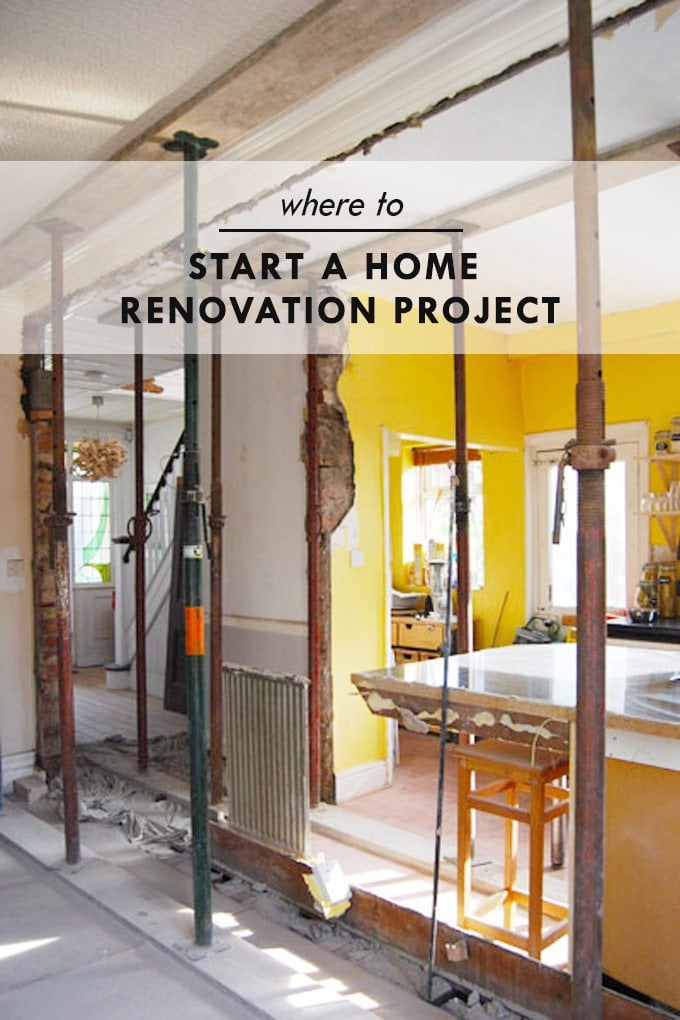
Earlier this week we shared our house to-do list with you. It’s a basic list of all big projects that we’d like to tackle in our new home and it’s a great way to have an overview of what ultimately needs doing.
In reality, we go into a lot more detail though so we thought it would be helpful to show you exactly how we plan all jobs that need doing around the house.
So, how do you know where to start when you buy a new home in need of work?
01
Start with the basics & make a LIST!
I know it starts obvious but going back to basics is the best way to get to grips with everything that needs doing.
If you’ve bought a house in need of renovation you will probably have had a survey carried out.
We have mixed feelings about surveys (mainly because we feel they’re a lot of blah-text and don’t go into enough detail) but they are a good way to get a rough overview of the jobs that will need tackling. Don’t just rely on the survey though as they don’t cover everything!
The more you know – the more prepared you’ll be. So take a good look around. Climb into the loft, lift carpets, knock on your walls to see if the plaster is loose (it’ll sound hollow), check your windows, look at your brickwork and pointing. Are there any cracks that seem worrying? Have you found woodworm? Is your paint flaking?
Even if you’ve bought a house that you think is in a good condition you’ll probably end up finding more than just a few things you’d like (or have) to update or change. You really want to be as thorough as you possibly can and make a note of everything that catches your eye.
You may not know what to do or how to tackle any problems at this point but that doesn’t matter. Knowing that you may have a problem that needs solving is the first step.
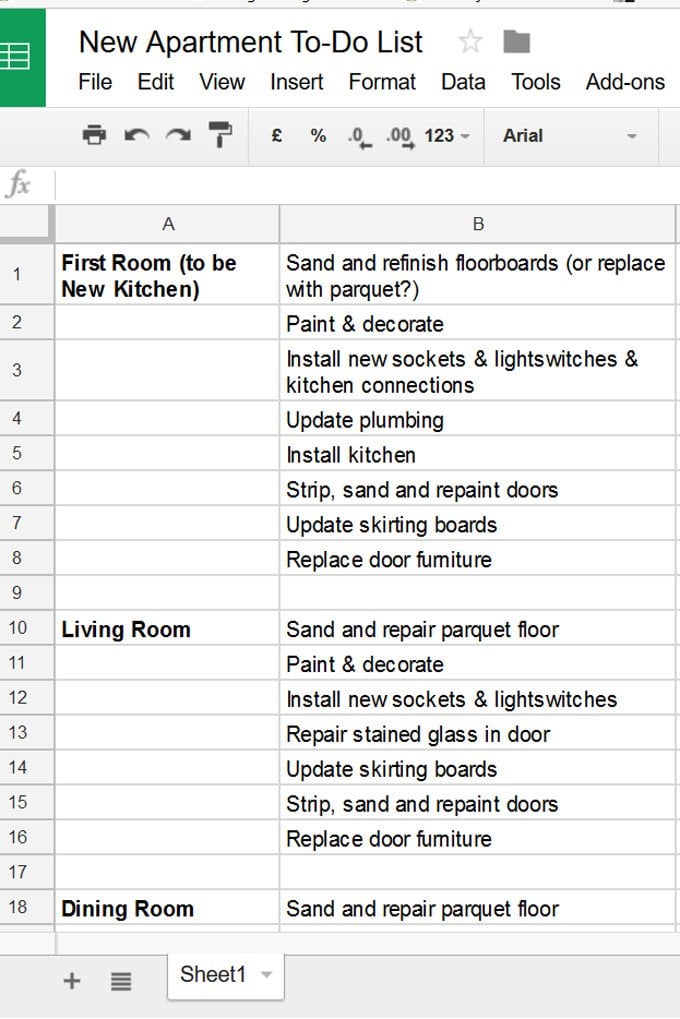
One of the main things that came up on the survey of our Edwardian house before we bought it was “may contain lead paint”. It came up again and again.
As with all surveys, I’m sure that the surveyor was covering himself to a certain degree, but hearing about all things that could be wrong with your home is a bit disconcerting, to say the least. (You can read our guide on how to deal with lead paint here). Knowing facts and making informed decisions is a really important part of buying a home.
02
Sort The List
Once you’ve made notes and have the possibly longest list you’ve ever seen it’s time to start sorting everything and grouping the problems and potential jobs that need doing into categories.
Open up an Excel sheet (we love to use Google Sheets) and add columns and rows for each type of project that will need doing.
We like to break down the list and sort it into categories based on the type of job (i.e. plumbing, electrics, plastering, painting & decorating, etc.) but there’s no right or wrong way. It’s all about finding a method for that works for you.
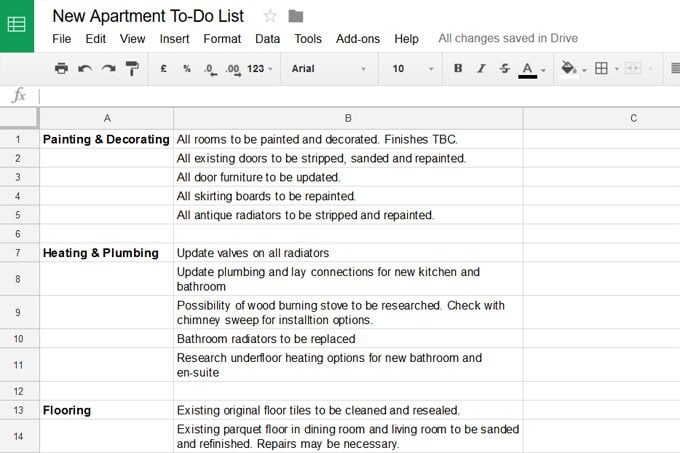
03
Set Your Priorities
When you’ve sorted your list, add additional columns where you can make a note of how important the job is and give it a priority rating based on how urgent the work is.
In addition to making a note of the priorities, we also like to mark a whole row in bright red if something is particularly urgent.
Inevitably there will be projects that you have to carry out sooner rather than later. If you have any big problems you’ll have to sort them before you can do anything else.
It’s also a good idea to consider the order that projects will have to be carried out in.
You can’t do any painting and decorating before your room has been plastered but you can’t do any plastering before you’ve sorted your electrics and plumbing.
Try to sort the projects in the order they have to be carried out in. As a very rough guide, it should be something like this (but it, of course, depends on exactly what work has to be done in your home and how serious any problems are).
- Major building work like knocking down walls or building new walls, changing room layouts, fixing any problems like worn pointing or dampness
- Windows
- Electrics & plumbing (1st fix)
- Plastering
- Tiling
- Painting & decorating
- Electrics & plumbing (2nd fix)
- Floors
One of the most annoying parts of renovating a home is that a lot of projects affect others. If you want to knock down a wall, for example, it’s likely there will be cables and/or pipes that will also need sorting.
To a certain degree, the order of your priorities will be dictated by the results of the survey but it’s just as important to decide what’s important for you.
What project would you like to finish first? What would improve your quality of living most? In what areas can you afford to spend money most? Which project is most urgent?
It can seem totally overwhelming but if you take the survey (or if you don’t have one on your list) to pieces bit by bit and break everything down into individual steps it can make it seem more manageable and less daunting.
04
Ask For Help
If you made notes of things you’re worried about in the first step now’s the time to ask for help. Friends and family are always good sources but if it’s something you think could be a bigger problem ask a professional.
Now is also the time to get quotes and find out what will be involved in fixing any issues you may have. Even if you’re the best DIYer the world has ever seen there are projects that you won’t be able or allowed to do yourself.
There are certificates and compliance paperwork that you’ll not only need if you ever want to sell your house again but you should also have for your own peace of mind.
If you’re uncertain of anything or your abilities, always ask/use a professional!
05
Detailed Planning
As detailed as the list you now have seems, we still go into even more detail when planning a specific project. You can think of the steps we’re sharing here as the first part of the planning process.
When you have an overview of everything that needs doing you can really start to plan your individual home improvement projects in more detail.
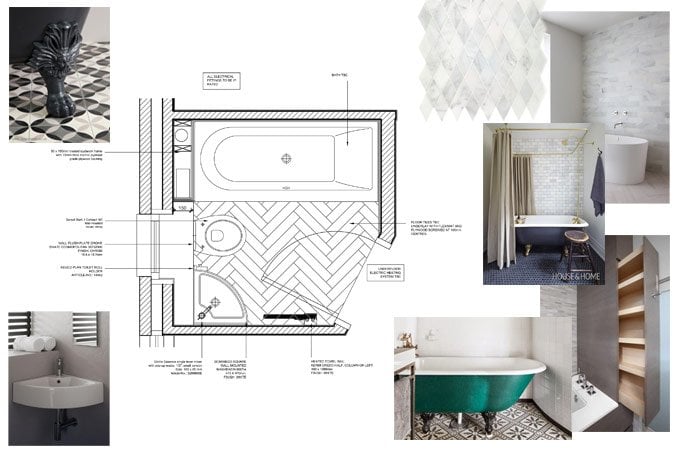
We wrote a post about how to plan a home improvement project where we go into a lot of detail on exactly how we plan a single project from gathering inspiration right through to costings and scheduling the work.
06
Set Your Budget
Another vital part of planning a home improvement project is setting your budget. It’s important to plan where you will be spending your hard-earned cash and keeping track of your finances is the best way to save money on your renovation, too!
Keeping track of your renovation budget will help you stay in control of your project and make any adjustments before they turn into problems.
We always use the same renovation tracker for all of our home improvement projects. At a quick glance, we can immediately see the state of our finances, how much money we’ve spent and where we’ve spent it. We made big profits on all of our homes and I honestly believe that the renovation tracker is the secret.
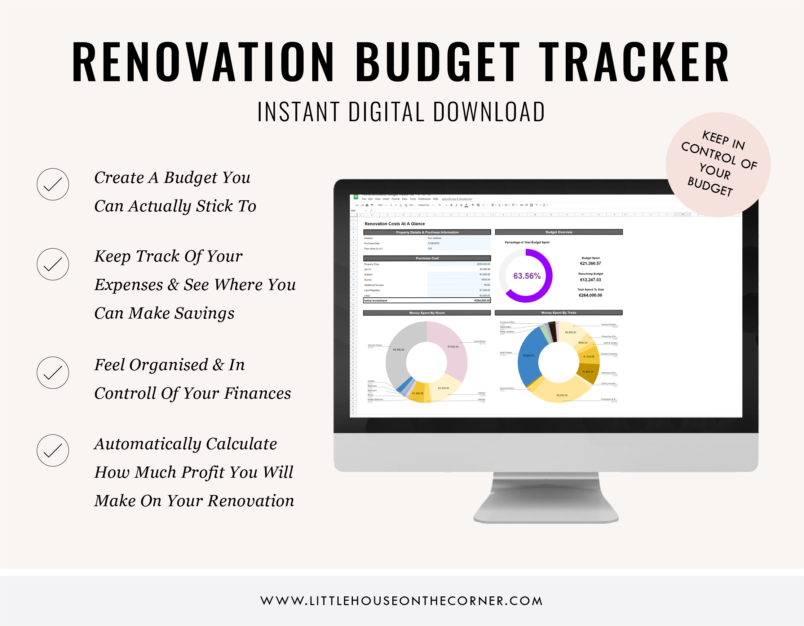
For the first time ever, we’re sharing the exact renovation budget tracker that we use so that you can easily keep track of your renovation budget, too.
I’m not going to lie. Renovating a whole house (or even just tackling a single home improvement project) can still be difficult. It’ll be daunting and it’ll probably cause you a few sleepless nights. Is it worth it? Yes! For us, it’s one of the best things we ever did.
How do you plan your projects? Do you love keeping lists? How do you stay organised? Where do you start planning your home improvements?

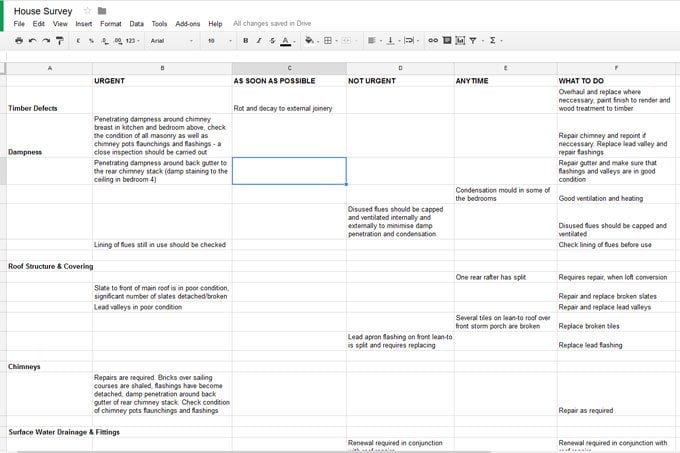
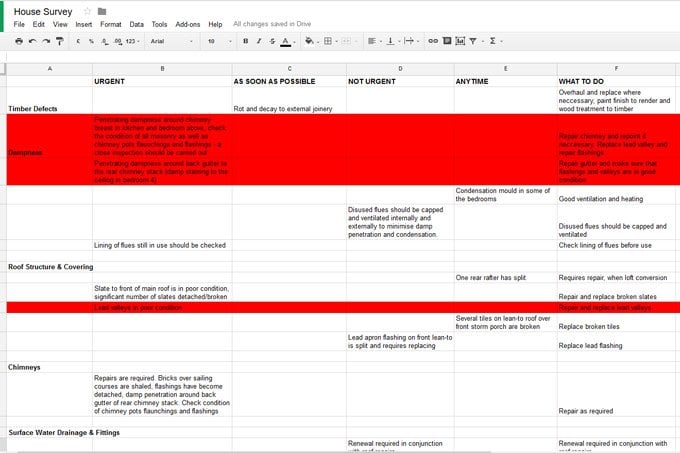

Alecia says
Hello,
Do you have a picture of all the lists on what you made. I am trying to do one and and have a bit of a learning disability. I am
getting lost on only seeing parts of it.
Thank you
Alecia
Christine says
We made these lists for our first house a long time ago and I only took pictures of the sections you can see. I’ve had a look and can’t find the original document but we’re actually working on a full home improvement budget tracker which I think will be perfect for you. It’s the one we use for all of our projects and we’ll be sharing it here hopefully next week.
Sorry, I can’t be more help just yet, Alecia!
Cx
Arkaa says
Thanks for sharing your home’s transformation. I love the updates and how your choice of paint and organizing talent gave your home a fresh,
bright and updated look. Congratulations on a job well done.
Christine says
Thank you, Arkaa!
Cx
Ella Hamilton says
I was looking for this type of blog and your blog really helped me. Your knowledge of the WHERE TO START A HOME RENOVATION is perfect. Keep posting.
Christine says
Thanks, Ella! Glad you find it helpful!
Cx
Steve Benzie says
Home renovation is an essential part of our home improvement, whenever we need to do some positive changes with our home interior and exterior we used to take the help of home renovation. Home renovation will save some money if we are planning to buy a new home, therefore, we should follow the instructions of an interior designer to do some suitable renovation. Apart from these, we should also follow some instructions from this article regarding home renovation and how we perform it in a good way. Thanks for such a wonderful article with useful information.
eMoov says
Budget is very important with your bathroom renovation project. And you have to be realistic in setting one. Make sure that you determine the amount of money that you can spend on the project. Also plan what design fits perfectly on every part of your house that you’ll be renovating. This way you can have the house that you’ve been dreaming for a long time.
Zequek Estrada says
I Like how this advice started off with the with the idea of doing what you can within your own power. In my opinion, it makes that step to asking a professional easier. I imagine that it’ll be easier to get the home renovations you want because you already have an idea of what you need to communicate.
Kyle Winters says
This is some fantastic advice, it always can be a little tough to decide when to start a home renovation project. Of course, you want to make sure you have everything you need before you begin as well. For example, if you’re having a contractor handle the work for you, then you want to make sure that they’ve been picked out well ahead of time.